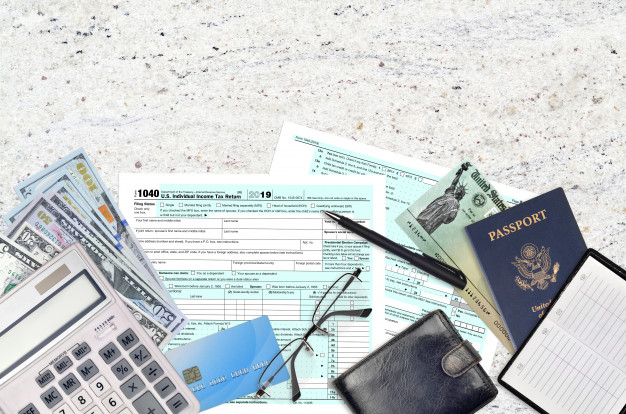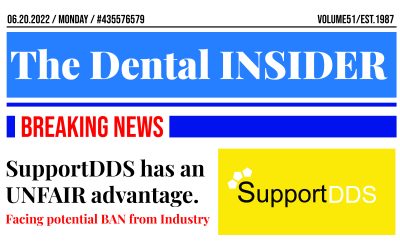How Small Businesses Can Get Money from the Stimulus Package

Here’s a guide on how to access the $360 billion in loans and grants that the stimulus package allocates for small businesses.
Congress has allocated a significant amount of money to support small businesses, as the latest Corona Virus stimulus package. Getting the know-how or the correct information on accessing it can be somewhat difficult.
The funds from the CARES Act stimulus package, which President Donald Trump signed into law on the 27th of March, are divided among three Small-Business programs that offer forgivable grants and loans, as well as loan deferral. These Small Business Administration programs are also applicable to Non-profits that meet the necessary size requirements.
This guide will focus on the two that allow businesses to apply for new loans, though the full menu of relief options is available on the SBA’s website.
Paycheck Protection Program (PPP)
The first is the Paycheck Protection Program (PPP), which allows organizations to get up to $10 million in loans that are 100 percent forgivable if they do not lay off any employees or if they rehire employees they’ve already laid off.
Economic Injury Disaster Loan Program (EIDL)
The second is the Economic Injury Disaster Loan Program (EIDL), which includes a $10,000 grant that businesses can apply for and they do not need to pay back. The rest of the EIDL loan, which caps out at $2 million, is not forgivable but can be more flexible than PPP in the types of expenses it covers.
According to some experts, it’s possible for businesses and non-profits to apply for both. “We encourage you to apply as quickly as you can because there is a funding cap,” reads a statement from the Treasury Department. Both programs also have a limited amount of funding, applying sooner is also important in case their allocated funding is fully used.
Currently, the EIDL application is already live and accessible here. The PPP application has been live since the 3rd of April, and the Treasury Department released an example of what it would look like.
This guide is will give a broad overview of both programs, but for specified questions, organizations can reach out directly to the Small Business Administration via a new 24/7 phone helpline: 1-800-659-2955. Businesses are also encouraged to connect with advisers at small-business development centers, women’s business centers, and SCORE, who are available to provide free guidance. (Contact information for the closest regional advisers can be found on their websites.)
What does the stimulus package include?
The Paycheck Protection Program and the Economic Injury Disaster Loan Program are the main options for small businesses and non-profits to obtain financial support during the Coronavirus Pandemic. (It’s worth noting that organizations can receive both loans and that an EIDL loan can also be refinanced into a PPP loan.)
- The Paycheck Protection Program (PPP): The bulk of the funds in the stimulus package, roughly $349 billion (for small businesses), is dedicated to establishing the Paycheck Protection Program, which is intended to guarantee businesses the loans they need to cover eight weeks of payroll, along with some utilities and rent costs.
If businesses adhere to the conditions of keeping employees on payroll, or rehiring them by the 30th of June, the loans are likely to become forgivable. Businesses are able to request 2.5 times their average monthly payroll costs for this loan.
Organizations can apply for PPP by contacting their banks and other lenders, or through this form on the SBA website.
- Economic Injury Disaster Loan Program and Advance (EIDL): There is $10 billion in the stimulus bill allocated for the EIDL, a program that has existed for some time.
This money will go towards two things: It sets up a grant program that would provide a $10,000 emergency “advance” that businesses won’t have to pay back, and it funds low-interest loans organizations can use to cover operating expenses, which will have to be repaid. The loan amount that organizations can request will be based on the amount of “economic injury” that they have sustained because of the pandemic.
Businesses and non-profits can apply for the EIDL directly on the Small Business Administration website.
When do applications open and when can I expect relief?
The EIDL application is already up and running, while the PPP application was just opened on the 3rd of April, for small businesses and non-profits. Another PPP application will go live on Friday, 10th of April, for independent contractors and self-employed individuals.
The PPP is an entirely new program the SBA is trying to get off the ground, which raises uncertainty. Treasury Secretary Steven Mnuchin has said that the goal is same-day approval for loans, but it’s not yet clarified how quickly the entire effort will be fully functional. Banks have raised concerns about the rushed rollout, and some have limited who they are accepting loan applications from.
However, the EIDL program is already actively fielding applications, and the $10,000 grants that are part of it are likely the fastest way for businesses to obtain relief at this point. Once a business is approved for these grants, it will be able to receive them within three days of approval, according to the SBA.
Any business or non-profit that applies for an EIDL loan can specify that it is interested in this emergency advance, and organizations can still receive it even if they aren’t approved for the full loan.
According to Michael Chaslow founder of the USC Small Businesses Clinic “Businesses applying for EIDL loans are eligible for an emergency advance of up to $10,000 that does not need to be repaid,”. He goes on to say “It seems that a business in need of immediate cash should pursue this option.”
First, determine eligibility
The first step for companies and non-profits interested in the stimulus package is to figure out whether they’re eligible for these specific loans, which are predominantly focused on helping organizations that have suffered hardships because of the coronavirus outbreak.
In addition to meeting the size standards that are set by the SBA, businesses and non-profits need to show that they’ve been negatively affected by the coronavirus.
Businesses and non-profits eligible for the PPP program are required to have been operational on February 15, 2020, and to demonstrate that the economic fallout from the coronavirus has hurt them.
These include:
- Any business with 500 or fewer employees
- Any 501(c)3 non-profit that has 500 or fewer employees, or otherwise meets the SBA’s size requirements
- Restaurants, hotels, or other businesses categorized under “Accommodation or Food Services” that have 500 or fewer employees at each independent location
- Tribal businesses and 501(c)9 veterans organizations
- Independently owned franchises
- Self-employed workers, independent contractors, gig workers, and sole proprietors
Businesses and non-profits eligible for the EIDL program are required to have been operational on January 31, 2020, and to have experienced negative economic effects because of the coronavirus crisis.
They include:
- Any business with 500 or fewer employees
- Any private non-profit that has 500 or fewer employees — or otherwise meets the SBA’s size requirements
- Sole proprietorships and independent contractors
- Tribal businesses, cooperatives, and employee-owned businesses
Next, figure out which loan makes the most sense for your business state
Organizations have to evaluate which loan program makes the most sense for their immediate needs.
Applying for both loans in the stimulus package is encouraged to make sure that businesses have more options — as long as they don’t use the two loans for the same purpose. (An EIDL loan could not be used to pay employees for the month of March if a PPP loan was already being used to do that, for example.
The focus of the two programs, ultimately, is slightly different.
Under PPP, the loans are predominantly aimed at covering payroll costs (up to $100,000 per employee) but can be used to address other expenses as well, including utilities, rent, and interest on mortgage payments. Loans used to cover these costs are 100 percent forgivable at the end of the eight-week period during which they are used, but if the money is used for other expenses, that portion of the funds will not be forgiven.
Under EIDL, the grants and loans can be used for a broader array of costs, including rent and mortgage payments, salaries, workers’ paid leave, and the business’s operational needs. This is because small business owners don’t have to worry about as many rules around loan forgiveness, there’s slightly more flexibility regarding these funds.
If a business or non-profit is looking for a more rapid influx of cash, the EIDL route is better — as it includes quick approval of the $10,000 emergency grant.
“Everyone should be applying for the disaster loans, that’s where there’s a potential for $10,000 in grants, as soon as the provision gets authorized,” says Cynthia Wikstrom, the campaigns director for the Main Street Alliance, an organization focused on advocating for small-business interests.
The difference between the two programs is that the PPP loans are entirely forgivable if companies meet a specific requirements, while EIDL loans (except for the $10,000 grant) are not. The cap for PPP loans is also higher, at $10 million per organization, while the EIDL loans cap out at $2 million.
What are the application processes?
Applications for these loans will go through two different channels.
- To apply for the EIDL loan and the $10,000 grant: Small-business owners and non-profits can apply directly with the Small Business Administration at this website: https://covid19relief.sba.gov/#/. When small businesses submit their applications for the EIDL loan, they can indicate they are interested in the emergency grant at the same time.
- To apply for the PPP loan: Organizations can call their current bank or lender directly, and the application is now live at the SBA website. At this point, banks are just beginning to accept applications, and calling now to indicate interest in the loan can help businesses get in the queue quickly.
The 1,800 banks that currently participate in the SBA’s 7(a) loan program are expected to participate in the PPP option also, and the Treasury Department is poised to approve additional lenders in the coming weeks.
Participating institutions include hundreds around the country such as TD Bank and Bank of the West, although some institutes — like Bank of America — may require businesses to have an existing credit card account or loan with the institution to be considered for PPP.
A comprehensive list of banks that currently offer 7(a) loans can be found on the SBA website. In order to move the process along quickly, SBA is not expected to be involved in the approval process, and banks will be able to move forward with candidates independently.
Businesses and non-profits need to provide information about their payroll costs. The requirements across the two programs differ slightly, though both have relaxed the need for a personal guarantee of the loan:
- PPP: Businesses are able to obtain 2.5 times their average monthly payroll costs for this loan, up to $10 million per organization. Costs that can be included as payroll costs include worker salaries, paid leave, health care benefits, commissions, and tips.
Average monthly payroll costs will be calculated using either monthly costs the business experienced from February 15 to June 30, 2019, or average monthly costs the business experienced from January 1 to February 15, 2020, if the business did not open until this year.
Businesses should begin preparing documents that demonstrate their monthly payroll and operational costs including payroll tax filings and rental contracts.
- EIDL: There are no personal guarantees needed for loans less than $200,000, according to Forbes. Businesses should have documentation that shows their operating expenses and revenue.
Be aware of the terms for loan forgiveness and for repayment
Components of both the EIDL offering and the PPP program are entirely forgivable, and each offers its own unique terms for repayment, which businesses should keep in mind as they are weighing the two.
PPP Terms
The PPP loans are forgivable, depending on whether businesses lay off workers and how they use the money.
- The loan will be completely forgiven if businesses do not lay off workers at all or if they rehire workers by June 30, 2020.
- If a business lays off workers and does not rehire them, a portion of the loan will not be forgiven. If a business reduces the wages it pays out to a worker by more than 25 percent during the time that it is using the loan, part of the loan will not be forgiven.
- If the loan is used for costs that are not approved by the bill, those portions will also not be forgiven and will have specific repayment terms.
- Repayment could be deferred for six months and will have an interest rate beginning at 1 percent. The maximum term of repayment is two years.
EIDL Terms
- The $10,000 EIDL grant that businesses and non-profits can apply for is forgivable and can be used for a wide range of business needs.
- Aside from the $10,000 grant, the rest of the loan is not forgivable.
- The loan will have a 3.75 percent interest rate for small businesses and a 2.75 percent interest rate for non-profits, and repayment can be deferred for six months. The maximum term of repayment is 30 years.
Will this stimulus package who were already laid off?
The rules (1) require businesses to spend 75 percent of their loans on payroll in order to qualify for forgiveness, and (2) clarify that firms that have already done layoffs can secure forgiveness by “quickly” rehiring laid-off workers. Taken together, this provides a powerful incentive for businesses to bring staff back on, since (essentially) any money you save by lowering your monthly payroll costs will just end up going to the government.
In summary, the loan facility allows for business continuity. Strategize and see the best way your business can utilize these loans. Prioritize your team member’s well-being and your business will stay afloat in this trying time. Leverage this stimulus package.
Source: VOX
Global BP Solutions is a leading Texas-based insourcing company that provides virtual assistants and administrative support for businesses. Moreover, we provide both short and long term virtual insourcing services customized to suit your business process needs.


